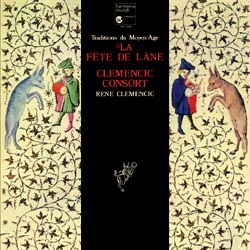In Christian iconography just like in real life, the donkey carries a heavy load. From transporting Moses during the Egyptian flight to the nativity, donkeys have not only been represented in many essential Christian events, they have also become emblematic over the centuries for Issachar, San Antonio, Saint Philibert and probably others. The symbolism of this poor animal does not stop there either. In no special order, it also stood for the people of Israel, the Devil and his Egyptian equivalent Typhon, god of darkness and sterility.
|
|
|
The love-and-hate relationship continued for centuries. Up to the 1960s, French schools would punish students to a corner wearing a hat with donkey's ears to signify humiliation and stupidity. Yet the animal is and always was revered as one of the hardest working creatures and a farmer's most prized possession.
The association we are interested in here is one of the oldest and darkest. Mentions go back all the way to the 9th century having to do with la fête de l'âne, literally donkey's day but probably more accurately described as the Feast of Fools (le Festival des Fous), a celebration neither religious nor pagan as we shall see.
Every year between Christmas and Epiphany, the strangest of celebrations took place wherein all values were turned upside down for a few days to celebrate the new year - a sign of rebirth and renewal inherited from pre-Christian cults and allowed to survive for centuries by the Catholic church as a way for populace and monks alike to "vent and let off steam" as described in 1440 by the theological faculty of Paris.
Depending on the region of France and the century, those celebrations took various forms but in one shape or another, they lasted well into the 16th century before they finally disappeared. The common characteristic of those festivities remains the turning upside down of rules and values. The mass would be sung using humorous texts and off tune while old shoes or excrement would get burnt instead of incense. Monks and priests would play dice, eat and drink generously during service and so would the general populace. On that day, authority would go to the lower clergy and a head deacon would be elected from the lowest ranking novices to be leader. In later centuries when the Feast of the Ass declined in popularity, it was replaced by the less religiously colored Feast of Fools. This latter tradition remained associated with the election of a Bishop of Fools to preside over the carnival, a reference Richelieu and Mazarin did not seem to particularly enjoy.
In 1979 Rene Clemencic and his consort, magisterially recorded once more by Harmonia Mundi, set on a journey to recreate what one of those days may have sounded like. This is based on medieval texts, alas most of them unpublished at the time. The resultant recording is unusual to say the least. It's a blend of religious chants interspersed with completely off-tune singing, bleating, animal calls, humorous acts - you name what you would not expect to find in a Gregorian mass and it is probably somewhere on this disc.
Nobody today can be certain whether this recreation is in any way accurate. Not that it matters. The value of the exercise and the final creation are worth a listen for any lover of medieval music. One word of warning - this is far less accessible than Tarentule, Tarentelle I reviewed a month ago. It will require your full attention to be understood and enjoyed. The best way to describe this is "experimental medieval music". It should probably be reserved for people having an already good understanding of this period or else the fully atonal and seemingly chaotic nature of the music is likely to be challenging for newbies. If you don't have any context for standard medieval music, the fully credible deconstruction performed by Rene Clemensic will likely be completely beyond you.
As already mentioned, recording quality is simply superlative and the re-edition by Speakers Corner once more reveals this performance in its pristine quality, making it hard to believe that this recording is already 30 years old. We should be grateful to Speakers Corner for not letting it slip away.
|
|



